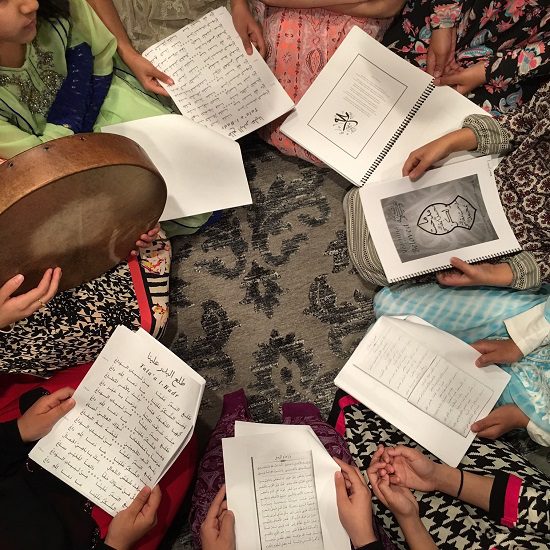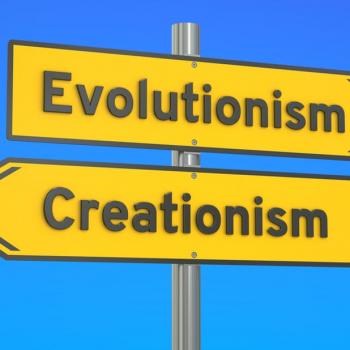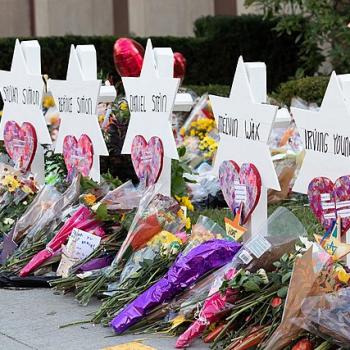 |
|
Luke bin Anakin?
|
As most “Star Wars” fans know, director George Lucas took spiritual elements, which are common in most major world religions to create his epic saga of good vs. evil. As a Muslim, I always thought of the “Jedi” as what a true follower of Islam should be like. Never mind the fact Jedi masters with their North African style cloaks and scruffy beards look like Sufi Sheikhs, but they way they are taught to respect a greater power, fight for the defense of the innocent and honor a code of morals and ethics in order to bring about peace and justice to their society, is basically what Islam teaches all Muslims to strive for. So what really is the connection between these similar Islamic principles and the fictional “Jedi Order” of the Star Wars saga?
I decided to look into this question more deeply. What I came across from my research off the internet and talking to other Muslim “Star Wars” fans was not only surprising, but also a bit scary. For example it was reported in a National Australian magazine that more than 70,000 Australians identified their religion as Jedi, Jedi-Knight, or Jedi-related in the country’s 2001 national census! Don’t these people realize that the “Jedi” are make-believe? There may be some truth in fiction, but instead of looking for the truth, people get caught up with the fiction. In this paper I hope to reveal where some of the truth of the “Jedi” and “Star Wars” comes from: Islam.
Back when “Episode I: The Phantom Menace” first came out, “The Muslim Magazine” had some interesting pieces on the connections between Islam and the content of the Star Wars films. One was an interview with Dhul-Nun Owen who talks about how George Lucas had contacted members of the “Habibiyyah Sufi Order” in Berkeley, CA in order to do research for “Star Wars.” There was also a piece by Mahmoud Shelton about how Sufi ideas of spiritual chivalry (“futuwwat”) have parallels in the Jedi teachings.
Surfing the internet, I came across an interesting article entitled “Eternal Jihad: The Way of the Mystic-Warrior” from a Sufi website:
“We are at the core a Movement of Jeddi; masters of Futuwwat (“the Way of the mystic-warrior”). We encourage adherents to train both physically AND spiritually, for their own personal edification and to enhance their knowledge and abilities in the STRUGGLE. The Real does not lie alone in contemplation, prayer and meditation; nor does it lie alone in action and revolution. Both of these are notions of “one or the other” and Allah is not “one or the other.” “Allah” literally means “the One[ness] which manifests from Nothing.” As we have stressed before, this “Nothing” is not the “lack” of all, but rather, it is Nothing in the sense of Totality of Being, which is symbolized by the numeral zero � this number itself originated with Sufis. Allah is neither the positive alone, nor the negative. Allah is the perfect balance between the two. The direct center of two polarities is always zero, Pure Nothing, from which the Totality, the Tawhid (Unity), the Oneness of ALL becomes manifest. For it is out of zero that all subsequent positive and negative numbers reel. That is Allah.”
Notice the Arabic term “al-Jeddi” (master of the mystic-warrior way) along with another Islamic term not mentioned, “Palawan” (similar to Lucas’ “Padwan” for Jedi apprentice) which were actual titles used by Muslim Knights!
The Force
“The Force” is the common thread between all six movies and is defined as an energy field, which binds all living things together (i.e. Allah, God, a Supreme Being or Power that most religion’s adherents worship, follow and/or yearn to become a part of). According to Star Wars mythology, the Jedi “are a noble order of protectors unified by their belief and observance of the Force.” The “Jedi” study and train under the apprentice-master relationship similar to how many religious students study under a priest or religious scholar until they have learned enough to teach and train the next generation of students.
From a Muslim perspective, the similarities between the Jedi and the Islamic traditions of instruction are strikingly similar. For example a Muslim scholar usually trains under a Sheikh for a number of years before they are given the right or permission (“Ijazah” in Arabic) to teach others about Islam. “In Islamic Sufism Sheikhs will have “silsilas” that list the chain of teachers going back to the Prophet Muhammad (S). A “silisia” indicates a Sheikh’s lineage of mystical learning from which he draws his spiritual authority.”
Similarly in the “Jedi” tradition of Star Wars, each “Padwan” (apprentice) is taught the same tradition and skills their Jedi masters were taught by their previous masters. “Star Wars” fans know the lineage of Jedi instruction starting from “Yoda” to “Count Dooku” to “Qui-Gon Jinn” to “Obi Wan Kenobi” to “Anankin Skywalker.”
In the first Star Wars movie, “Episode IV: A New Hope,” Luke Skywalker, like his father, Anakin, live in the desert (The desert planet of “Tatooine” was actually filmed near the real desert town of “Tataouine” in Tunisia). From among this remote desert area with no roots of a civilized urban society, a “Chosen One” (i.e. a Prophet) arises who brings a hope of peace and justice to their society. Anakin is the “chosen one” in the latest Star Wars films, and Luke can be considered the “chosen one” from the original Star Wars trilogy.
Similarly, the Prophet of Islam, lived in the desert where there was no true rule of law or justice and people followed the tribal system of blood vengeance. Prophet Muhammad (S) brought Islam to the Arabs, which completely changed their way of thinking and the way they lived their lives. Instead of living for the present and for themselves, as Muslims they live for the hereafter and are taught to take care of the poor, orphans, those less fortunate than themselves and to fight for social justice and well being for the whole community.
Thus the Jedi too is taught to be selfless and not selfish like the “Sith” (An ancient order of Force-practitioners devoted to the dark side and determined to destroy the Jedi). Just as “Yoda” taught young “padwans” not to give into fear and be tempted by the “Dark Side” (i.e. temptations of the devil or “Shaytaan” in Arabic), Muslims are taught not to be attached to the “Dunya” (life in this world) nor to fall prey to the diseases of the heart (jealousy, envy, fear, hatred, etc.) as they lead to evil and sin.
The Green One
There is an interesting connection between the Jedi master “Yoda” (a short, green skinned creature first seen in “Episode V: The Empire Strikes Back”) and Islamic traditions. “Al-Khidr” means “the Green One” in Arabic. Qur’�nic commentators say that al-Khidr is one of the prophets; others refer to him simply as an angel who functions as a guide to those who seek God. And there are yet others who argue for his being a perfect wali meaning the one whom God has taken as a friend.
So in other words “Yoda” (which means “Wise One” in Hebrew) is like an angel or spiritual mentor who guides the young Jedi in the ways of the force and to be strong enough to resist the temptations and evil inclinations of the Sith and other Dark Forces.
In “Episode VI: Return of the Jedi”, the Emperor tries to influence Luke Skywalker to give into his feelings of Anger and Hatred (As we all know Luke’s father Anakin, did fall prey to the Emperor’s whispers and joined the Dark Side). Because the Jedi (as Muslim warriors) are taught that one’s intentions in battle must be pure and that it’s wrong to kill out of anger, even when is outwardly justified.
‘Ali (RA) the nephew of the Prophet Muhammad (S), was faced with this situation at the Battle of the Ditch, the noble Imam ‘Ali had knocked an enemy soldier to the ground and was raising his sword to kill him, when the unbeliever spat in the his face. Imam ‘Ali at once stood still and refrained from killing his enemy. Hardly able to believe his own eyes, the unbeliever asked: “Why have you spared me, O gracious one?”
To this, the noble ‘Ali replied: “Your property and your life have become sacrosanct to me. I am not authorized to slay you. I can receive permission to kill only in holy combat, in fighting commanded by Allah. Just a few moments ago, I had overcome you in battle, knocked you to the ground and was on the point of slaying you. But when you spat in my face, my selfish anger was aroused against you. If I had killed you, I would have slain you not for Allah’s sake but for my own selfish reason; they would then have called me not a champion warrior, but a murderer. When you spat in my face, my selfish passion threatened to overwhelm me, so instead of striking you with the sword for my own sake I struck my passion for the sake of Allah, Exalted is He. There you have the reason for your escape.” The unbeliever was of course in awe by Ali’s noble character, and immediately accepted Islam and became Muslim.
Muh-Jedi-Deen
The Jedi could be considered “Holy Warriors” (or “Muhajideen” in Arabic) as they fight for truth, justice and peace. They meditate (i.e. “Dhikr” � remembrance of Allah) as much as they can, to become “one with the force”, even in the midst of battle. Just as in “Episode I: The Phantom Menace”, the Jedi master, Qui-Gon Jinn (The term “Jinn” in Islam is one of the forces of the “unseen”) begins to meditate in the middle of his battle with “Darth Maul”, while he waits for a force field to go down.
Islamic History is filled with stories of Muslim Warriors who also stop in the heat of the moment of battle to give their prayers to Allah. Hussein (RA) the grandson of the Prophet Muhammad (S) stopped to do his Asr (mid-day prayers) at Karbala. There is even an account of ‘Ali (RA), known as the “Sword of Light” (light-saber?), who completed his “Salat” (Arabic for prayers) while he had an arrow stuck in his leg or foot!
The lack of fear for death exhibited by Jedi Knights Obi Wan Kenobi, Yoda, Qui-Gon Jinn, Luke Skywalker (particularly in Episode VI: “Return of the Jedi”) resembles the Muslim warrior’s creed that states that the Muslim loves death more than the un-believer loves life.
There is another saying in Islam, which is “Life in this world is Paradise for the Un-believer and a Prison for the Believer.” Some reasoning behind this saying is that if one puts all their faith in this world (the “Dunya”), then it is very easy to fall off the straight path and be tempted by Satan (i.e. fall prey to the “Dark Side”).
This is shown very clearly in “Episode III: Revenge of the Sith,” which is all about the Chosen One’s (Anakin) fall into the dark side. Lucas, himself stated in an interview that the he chose the final battle between Anakin and Obi-Wan to be on a planet with flowing molten lava and fire, which represents the fires of Hell. The ultimate showdown between good and evil.
Anakin falls victim to the dark side because he loves power and the Dunya (as he wanted to have the power to live forever and save his loved ones from death � i.e. his wife from dying during childbirth). He has excessive anger and arrogance (as he felt he was the most powerful Jedi and no other Jedi was better or stronger than him) and distrust for those who are his righteous guides (as he felt Obi-Wan was jealous of him and thought the Jedi Council was against him, which lead him to follow other sinister forces for guidance). Lastly he had hatred in his heart (he admitted to hating the “sand people”)! Everything that Islam teaches the Muslim to avoid!
The Sand People
The “sand people” or the “Tusken Raiders” could be considered a metaphor of the Arabs and other people of the Middle East, since they live similarly to nomadic Arabs in the desert. In “Episode II: Attack of the Clones”, the Tusken Raiders kidnap and torture Anakin’s mother, Shimi, which eventually leads to her death. Anakin then proceeds to kill all the “sand people” in vengeance, and as he told “Padme,” that he “killed all of them [sand people], including the women and children.” But this did not relieve him of his anger and hatred.
I believe Lucas was trying to make a point about the continuous spewing of hate and evil against the Arab and Muslim people, specifically after September 11 th. Even though the countries of Iraq and Afghanistan were bombed and destroyed relentlessly (it hasn’t stopped yet), as punishment for the attacks of September 11 th (without any proof or legitimate legalities of course), many Americans still have a lot of hatred against anyone that even looks like an Arab or Middle Eastern. Many innocent people, specifically women and children, have been harassed, attacked and sometimes even killed, because of this hate.
This wasn’t the only example of Lucas getting political, since after Episode III debuted at the Cannes Film Festival, many Europeans were saying that Anakin represents Bush and his Neo-Con cohorts currently in power. One couldn’t help but notice the very overt examples in the last and final installment of the “Star Wars” series.
An example that sticks in my mind is when the Emperor was taking control of the Senate. Senate Palpatine (aka the Emperor) was calling for war against the “separatists” (i.e. read as “insurgents”, “terrorists”, etc.) and the Jedi, all the while the whole Senate erupted in agreement. Padme (aka Queen Amadala) then says “..So this is how Liberty ends, with thunderous applause”!
Of course the most obvious example was when Anakin tells Obi-Wan before their final duel, “Either you’re with me, or against me”, which is basically straight out of Bush’s mouth when he said “Either you’re with us [i.e. America], or you’re with the terrorists” immediately after the attacks of September 11 th.
Which reminds me of a very funny take on the whole Bush Inspired U.S. “War on Terror” transposed into “Star Wars” mythology I came across on the web. Here is an excerpt:
It’s believed that Skywalker [Luke] was specifically trained by infamous terrorist O bin Wankanobi. Wankanobi, occasionally called “Ben” and easily recognized by his bearded visage and long, flowing robes, achieved near-martyr status among the Rebels after his death last year during a spy mission. His more fervent followers believe that Wankanobi lives on within them today, some even claiming to hear his voice during times of duress.
The attack on the Death Star came shortly after the Empire’s destruction of Alderstaan, a planet whose government was known to harbor terrorists. Responding to criticism over the total annihilation of the planet, [Darth] Vader stated, “There is no middle ground in the War on Terror. Those who harbor terrorists are terrorists themselves. Alderaan was issued ample warning. The fight for continuing Freedom is often burdened by terrible cost.”
In other words, the Emperor, Darth Vader and the Empire are equivalent to Bush and Company and Luke Skywalker, the Jedis and the Rebel Alliance are referred to as “terrorists” (or “separatists”, “insurgents”, etc.).
The Jedi Arts
One of the most popular aspects of the “Star Wars” films are the exciting light-saber duels and swordsmanship (Lucas is an admitted fan of old Samurai films) and martial arts style fighting (which of course originates from the East). As a former student of “Eskrima Serrada” (Stick and Blade fighting developed by Muslims of the Philippines) myself, I see a lot of similarities in the fast-moving and short-range fighting I studied for about a year and a half, and the “invented” art of the Jedi masters.
When Anakin fights Count Dooku (Christopher Lee) at the beginning of the last “Star Wars” film, at end of the fight, Anakin applies a disarm and cut that is a technique from Eskrima to Count Dooku’s arm. Going back into history, the technical differences between the Japanese/Chinese arts and the Muslim arts of Southeast Asia regions of Indonesia, Philippines, and Malaysia: The Muslim arts of “Pentjak Silat” and Eskrima are based on paying attention to the Limb of the attacker and not an immediate strike to the attacker’s head or torso.
Ray Park, who plays “Darth Maul” in “Episode I: The Phantom Menace”, studied Kung Fu (very similar to the empty hand techniques of Serrada) and Wushu and frequently traveled to Malaysia (a Muslim country) to refine and develop his skills.
The spiritual basis of the Muslim arts of Southeast Asia is very immense. This is the local Sufi expression of Islam, through martial arts practice, rather than through poetry or music as otherwise done in India and Turkey, etc. Traditional Indonesian/Malay folklore attributes initial design of these arts to Muslim saints in the region of Indonesia, Malaysia and the Philippines in the 7th Century. The Silat system is attributed to nine main Wali or saints, also called the Wali Songo in Indonesian language.
Here another example of the Sufi and Jedi connection. As Jedis study the force and train in the “Jedi Arts” under the apprentice-master relationship, so do the Sufis.
“What I term the more Sufi exercises include breathing exercises, means of meditative contemplation, and physical exercises. This last activity is practiced within the Qadiri-Rifai Sufi order through the Indonesian martial art of Pencak Silat Gerakan Suci. Here is a prime example of the Order’s growth. Extending beyond its originally Turkish character, the Order has adopted a Muslim practice from a far corner of the Islamic world.”
From my brief amount of research and study into the “Star Wars” saga, I found many examples connecting the ideals and principles of Islam to that of the fictional Jedi Order. Some of the similarities were clearly visible (as with the relations between the Jedi master, apprentice and the Force to that of the Sufi Sheikhs, students and worshipping of Allah), while others were a bit more hidden and surprising finds (such as the term “Jeddi” and “Palawan” for Muslim knights and the story of “al-Khidr” � the green spiritual guru which has an uncanny resemblance to the Jedi Spiritual master “Yoda”)!
Even though Lucas himself is not a follower of any specific religion, he has used elements of Islam (as well as other world religions) to convey the universal understandings of good and evil. Combining that common thread of humanity with a futuristic space-age setting and exciting martial arts swordsmanship, came a creation that has inspired many, no matter their race, religion or culture. There is something about the “Star Wars” saga that everyone can relate to and enjoy. And I hope that those people who are searching for a “truth” within the mythology of “Star Wars”, will look a little deeper behind the fiction and find Al-Islam: A true way of life which emphasizes peace, justice and brotherhood for all humanity.
Irfan Rydhan is an architectural designer (and Star Wars fan). He lives in San Jose, California.











